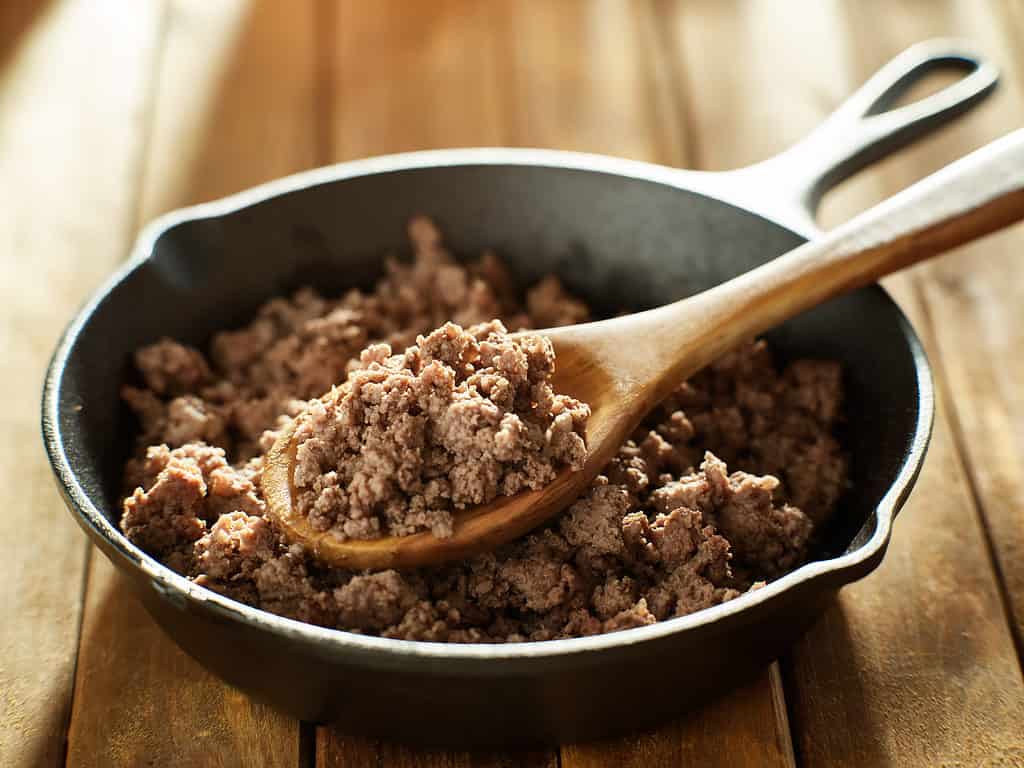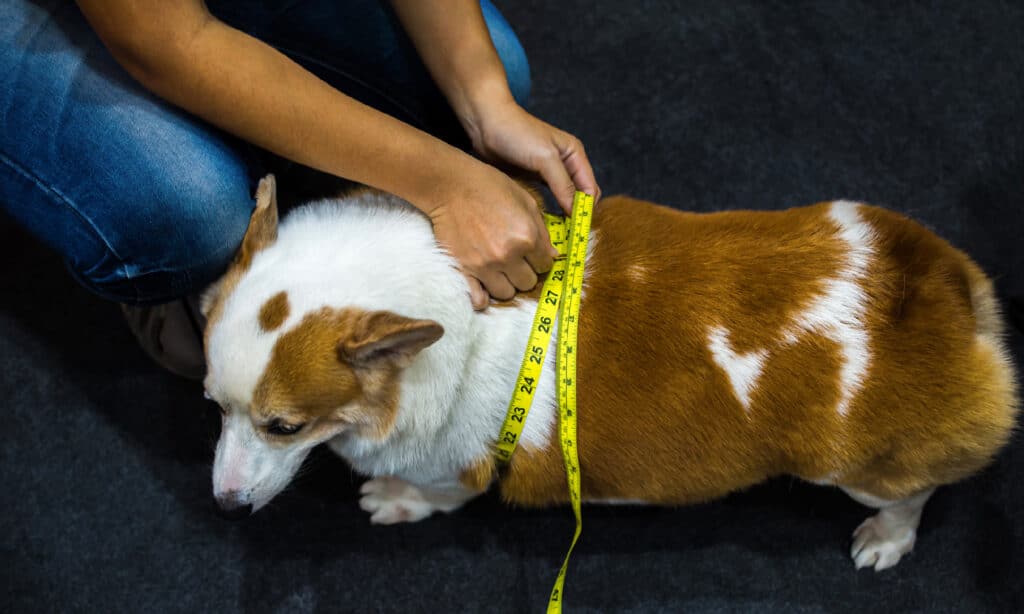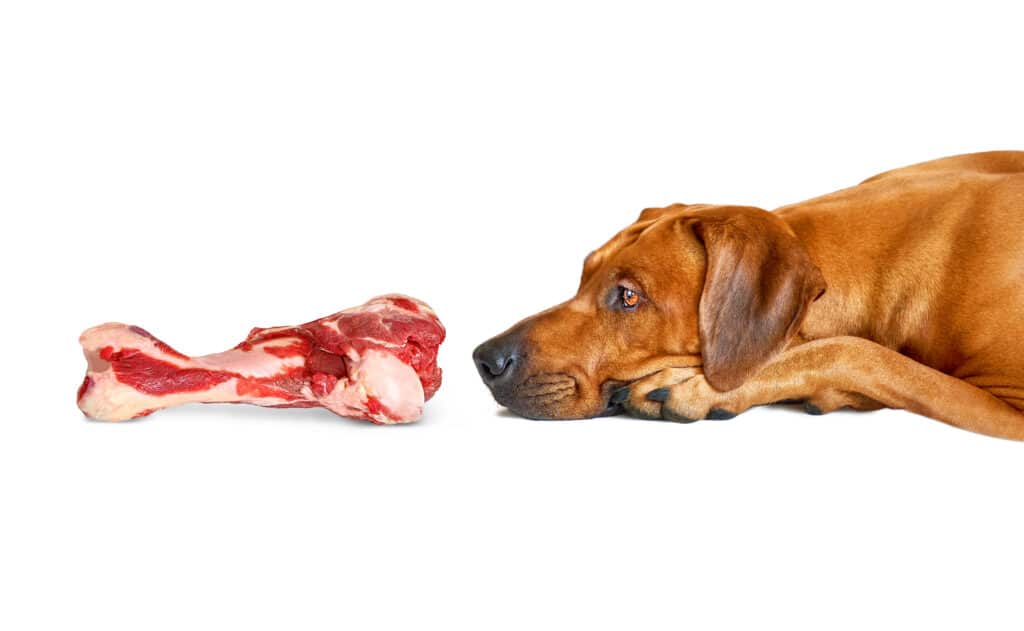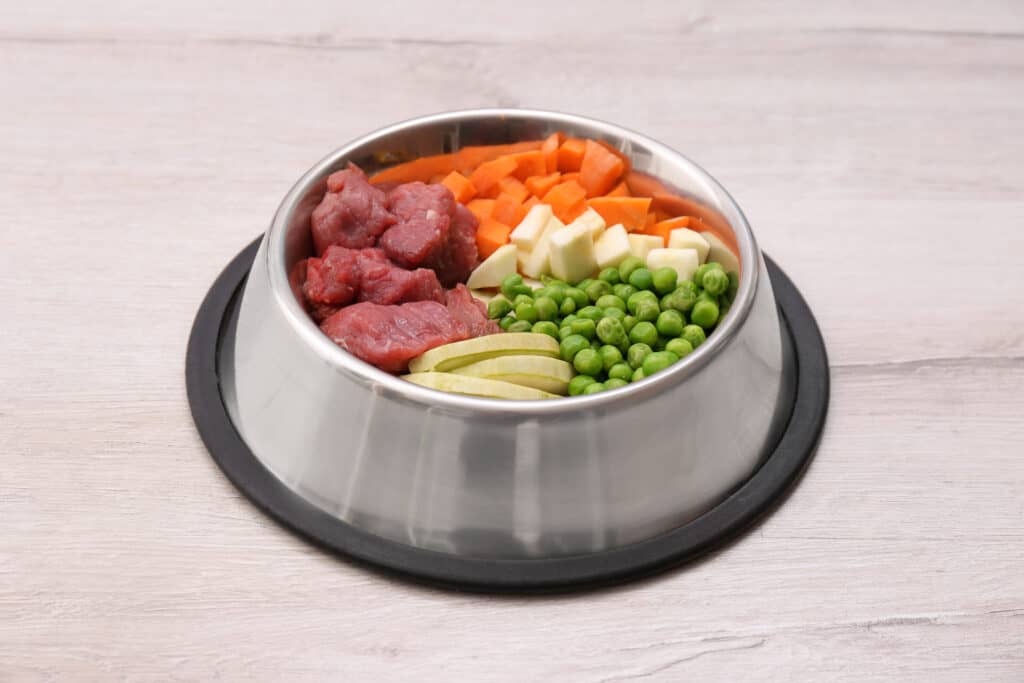Dogs can consume ground beef as long as it is cooked. Only ground beef you would eat should be given to your dog. Therefore, it should not be moldy, old, or otherwise unsafe. Ground beef can be used as a nutritious treat or a regular topper. If your dog has appetite problems, adding ground beef can improve its appetite.
However, you should avoid using any seasonings or spices on ground beef for your dog, as many of these are toxic. Garlic and onion powder are common toxic seasonings, but there are others. Added salt should be avoided, too, as dogs are more sensitive to salt than people.
Ground beef itself isn’t toxic. However, too much can cause stomach upset, especially if the meat is fattier. Many dogs aren’t used to consuming meat. Therefore, if you add it to their diet, stomach problems may develop. Start small and slowly increase the amount they eat. If your dog develops stomach problems, reduce the amount of ground beef you give them.
All ground beef should be cooked thoroughly. Raw meat isn’t safe for you or your dog. It may contain food-borne illnesses and parasites, for instance. Your dog could get these illnesses and then pass them on to you. Or, you could get them while handling the food. Children and pregnant women are particularly vulnerable.
For these reasons, we don’t recommend giving your dog raw meat. Cook it just like your own food, but with no seasonings or other added ingredients.
Benefits of Ground Beef

Dogs can eat ground beef, but only if it is thoroughly cooked and has no seasonings, including salt.
©Joshua Resnick/Shutterstock.com
Adding ground beef to your dog’s diet can have several benefits. As meat, ground beef is nutritionally suitable for dogs.
Nutrition
Ground beef is very high in nutrients your dog needs. We recommend leaner ground beef for a lower fat content, which can cause issues for many dogs. However, lean ground beef is mainly made up of protein – a vital macronutrient for your dog.
On top of protein, ground beef includes all of the essential amino acids your dog needs. It is a complete protein, making it a healthier option. Your dog cannot create essential amino acids in their body; it must consume them. That is why they are called “essential.”
With that said, ground beef isn’t nutritionally complete. It doesn’t contain all of the nutrients your dog needs. However, it is a nutritious type of meat that works well for most dogs.
Plain
Ground beef is a pretty plain food when seasonings are not added. Therefore, it may be suitable for dogs with stomach problems. It doesn’t include any fillers that commercial dog food or other diets may include.
However, when using it for this purpose, it’s vital to choose lean ground beef. Excess fat can often cause worse stomach issues for your dog.
Potential Downside of Ground Beef

If you feed your dog too much ground beef or ground beef with a high-fat percentage, they could have weight problems.
©iStock.com/PongMoji
Ground beef isn’t completely safe, though. There are some downsides to feeding your dog ground beef that you should consider.
Fat Content
All ground beef includes some fat. However, high-fat percentages aren’t recommended for dogs. While dogs need fat in their diet, too much fat at a time can cause stomach upset. Furthermore, ground beef includes a decent amount of saturated fat, which isn’t the best fat for your dog to consume.
We recommend low-fat options when choosing ground beef for your dog.
Expensive
Ground beef can be costly. Therefore, most people can’t afford to feed their dogs tons of ground beef. It just isn’t practical.
Plus, you can expect to pay even more if you purchase high-quality meat.
Of course, if money isn’t a huge issue, then this may not be a huge disadvantage. Still, you should consider if the price is worth the benefits, even if you have the money. Feeding your dog mostly beef is expensive, and it requires supplementation. Commercial food is cheaper and nutritionally complete, which often makes it the better choice.
Raw vs. Cooked Ground Beef

Dogs shouldn’t consume raw meat, for several reasons.
©iStock.com/Zontica
You’ll find many people on the internet feeding their dogs raw food. However, this isn’t recommended by most professionals. Firstly, dogs can get food-borne illnesses from consuming raw meat. Luckily, dogs are often less affected by these illnesses. But they can pass them on to their humans.
For instance, Salmonella is often shed by dogs fed raw diets. You may not think you’ll come into contact with your dog’s feces, but it takes a minimal amount to infect a person. Infants and young children are at a higher risk as they spend more time on the ground.
Imagine this scenario: your dog eats raw ground beef, cleans his plate, and then lays in a different room. However, the dog still has food particles on their tongue and teeth. These particles could end up on the floor while the dog is resting. Then, a child could later play in that area, getting Salmonella.
It takes only a little bit for infection to occur.
For these reasons, we always recommend cooking ground beef as you would for yourself – except without any of the seasonings. This will ensure that your dog and family stay safe.
Can Your Dog Eat Just Ground Beef?

If your dog eats only ground beef, it won’t receive all the nutrients it needs.
©New Africa/Shutterstock.com
There are a lot of misconceptions out there about a dog’s diet. One of these misconceptions is their relationship with meat. Many believe dogs are carnivores, but this isn’t the whole story. Dogs are opportunistic carnivores, like humans. In most natural settings, dogs will choose meat when it is available. However, they won’t choose only meat.
Meat does not include all the nutrients dogs need. Instead, dogs have developed to eat a diet similar to humans (after being domesticated for thousands of years). Dogs can eat grains and a host of other foods. While they did evolve from wolves, a dog’s digestion is much different from a wolf’s.
A dog that only ate ground beef would quickly develop nutritional deficiencies. They simply aren’t made to consume only meat. Therefore, we highly recommend giving your dog other foods, too. Commercial diets are nutritionally complete. Supplementation is often necessary for those who want to cook an at-home diet.
Can I Mix Ground Beef with Dry Dog Food?

There are some caveats to bear in mind if you mix ground beef with your dog’s dry food.
©alexei_tm/Shutterstock.com
You can mix ground beef with other dry dog food. However, you need to lower the amount of dry dog food your canine consumes to prevent obesity. You don’t want your dog gaining weight, as this can contribute to other health issues.
However, commercial food is designed for dogs to only eat that food, though. The nutrients are based on the dog’s weight and assume that the dog will eat only that food. Therefore, if you cut the amount of commercial food your dog is eating, it may not get all the nutrients it needs. Therefore, it is vital to add nutrition to your dog’s diet if you add a substantial amount of ground beef.
When in doubt, we recommend working with your vet. They can help determine your dog’s nutritional needs and make recommendations. With that said, we don’t recommend adding ground beef to most dogs’ diets. In many cases, dogs are completely fine with their commercial diet. Adding ground beef can be overcomplicated and expensive with little benefit.
Conclusion
Ground meat is meat, so many people assume that it’s very healthy for dogs. However, while this food is pretty nutritious, it doesn’t provide all the nutrition your dog needs. Therefore, your canine will also need to consume other foods or be supplemented in a different way. It works fine as a treat, however.
Any ground beef you give your dog should be completely cooked and plain. Many seasonings are toxic to dogs, including garlic and onions. Therefore, we don’t recommend adding any seasonings, including salt.
Some people may give dogs raw beef. However, we don’t recommend this. It puts you, your family, and your pet at risk for bacteria and parasites. While your dog may not be affected right away, there is always a chance of infection.
Up Next…
- Can Dogs Eat Sausage? Sort Of.
- Can Dogs Eat Chicken Nuggets? It Depends
- Can Dogs Eat Rib Bones? Are They Safe?
The photo featured at the top of this post is © Joshua Resnick/Shutterstock.com
Ready to discover the top 10 cutest dog breeds in the entire world?
How about the fastest dogs, the largest dogs and those that are -- quite frankly -- just the kindest dogs on the planet? Each day, AZ Animals sends out lists just like this to our thousands of email subscribers. And the best part? It's FREE. Join today by entering your email below.
Thank you for reading! Have some feedback for us? Contact the AZ Animals editorial team.






